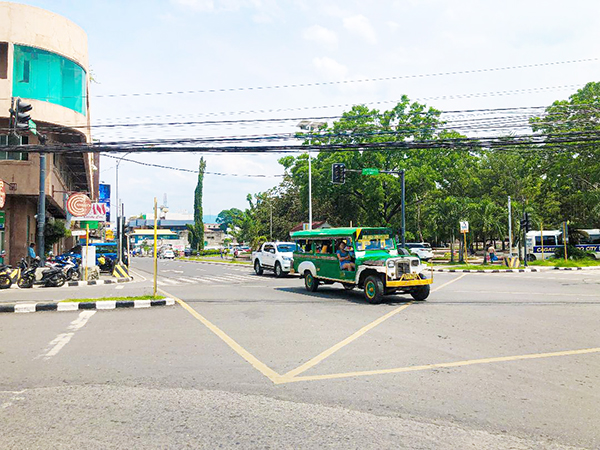Implement public transport route plan, Cagayan de Oro city gov't urged
CAGAYAN DE ORO CITY – A transport group has called on the city government to fully implement the Local Public Transport Route Plan to enable cooperatives or corporations with modern public utility vehicles here to survive.
Luzminda Escobidal, manager of the PN Roa Canitoan Transport Cooperative, said without the implementation of the LPTRP, the high number of jeepneys on every route will remain their biggest problem aside from the presence of other public transportation.

A PUBLIC utility jeepney on Gaerlan St., Barangay 1, Cagayan de Oro City. (Franck Dick Rosete)
"It is possible that the cooperative may fall into bankruptcy if we aren't able to manage and supervise it properly," Escobidal said in a press conference on Saturday, September 30.
The LPTRP is a plan that specifies the route network, mode, and necessary number of units for public land transport services according to Joint Memorandum Circular No. 1, Series of 2017, of the Department of Transportation and the Department of Interior and Local Government.
This will form the framework of an extensive local transportation plan. It was created by local government units and approved by the DOTr and Land Transportation Franchising and Regulatory Board.
The LPTRP was approved by the DOTr and the city council here through Ordinance No. 14337-2022 on June 27 last year as part of the Public Utility Vehicle Modernization Program of the national government.
A local government unit's LPTRP is also one of the major requirements for transport cooperatives and corporations in negotiating a loan from government financial institutions for the purchase of modern PUVs.
But LTFRB Memorandum Circular No. 2023-018 authorizes the agency to issue an alternative certification to fast-track the approval of the loan applications of cooperatives and corporations from LGUs that have yet to secure their LPTRP.
Engr. Nonito Oclarit, department manager of the Roads and Traffic Administration (RTA) here, said they are still unable to implement the LPTRP as they are still awaiting the list from the LTFRB-Region 10 of the approved transport cooperatives or corporations that applied for the different routes in the LPTRP.
Oclarit said they still have to wait for the LTFRB as they need to identify the routes awarded to the transport groups, who are these cooperatives or corporations, and the number of routes that were approved.
"We cannot easily implement the LPTRP if there’s no (transport cooperatives or corporations) that handle those routes," Oclarit said.
LTFRB-10 Director Aminoden Guro said on Monday that only around 20 percent of the routes from this city’s LPTRP are operated by modern PUVs but several groups have been approved for different routes.
They are just awaiting their loan approval to enable them to purchase their vehicles.
The LPTRP here, Guro said, has 33 developmental routes – routes designed to serve new residential, commercial, and other land use developments – and 47 rationalized routes.
The Pontransco manager urged the city government to implement the LPTRP even though the other cooperatives or corporations only have traditional jeepneys in the meantime to meet the required number of units to run on a specific route.